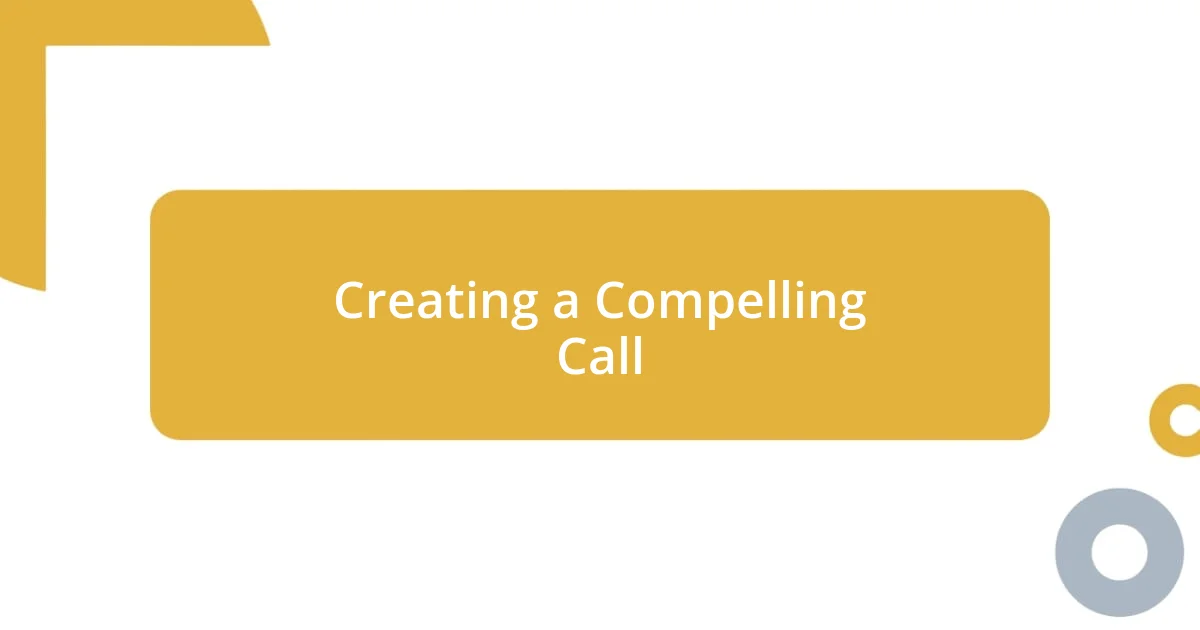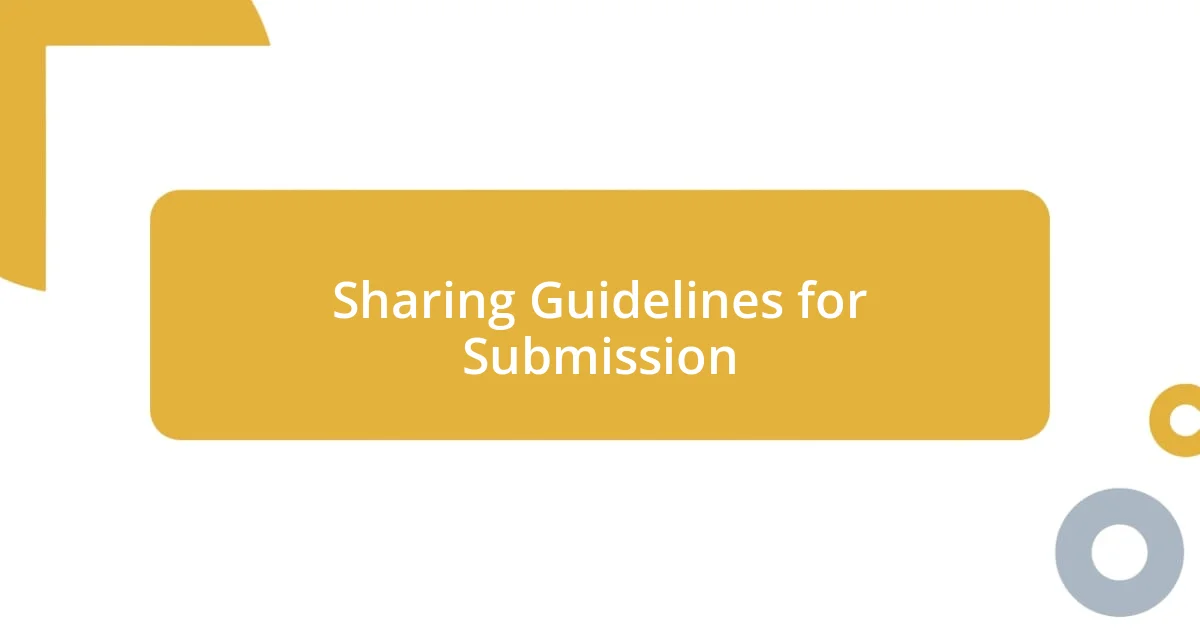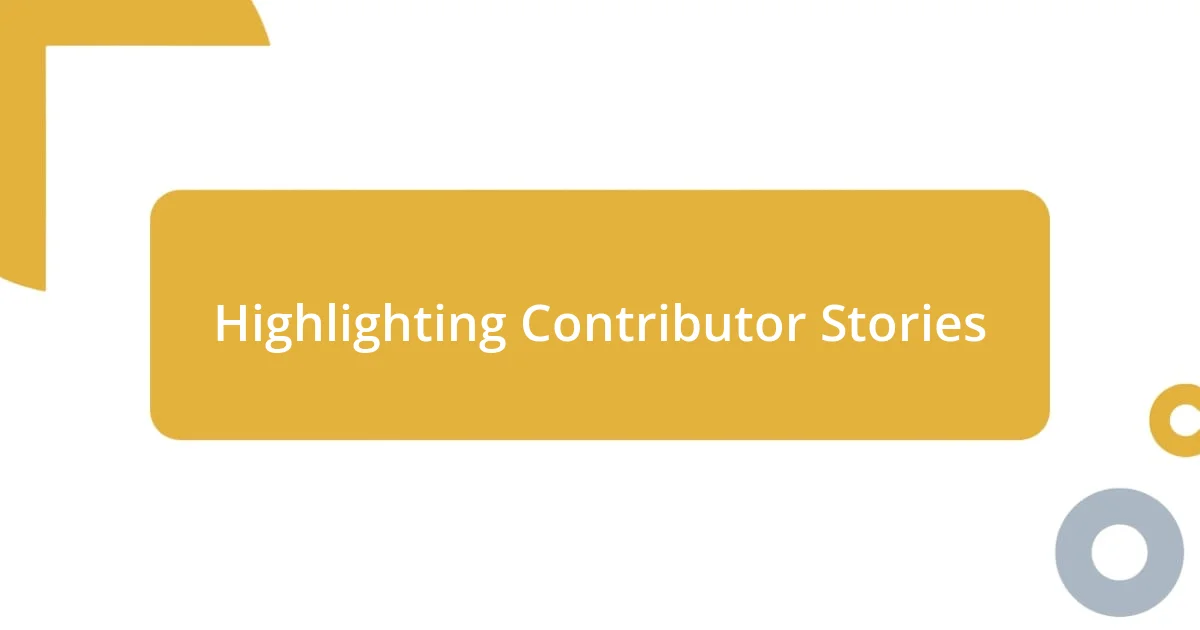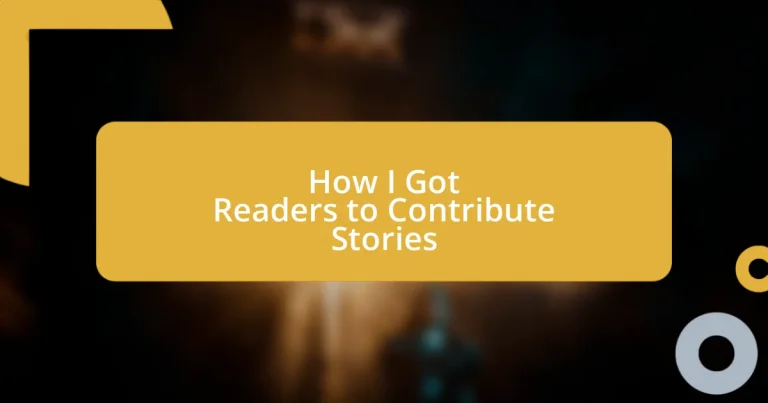Key takeaways:
- Understanding your audience enhances engagement and leads to valuable contributions by reflecting their voices and experiences.
- Creating compelling calls for contributions, using storytelling and urgency, encourages readers to share their unique stories.
- Post-submission engagement, including personal acknowledgment and fostering dialogue, builds community and encourages ongoing participation from contributors.

Understanding Your Audience
Understanding your audience is the cornerstone of encouraging reader contribution. I remember hosting a small workshop where we discussed the importance of knowing who we’re writing for. It struck me how much more engaged participants became when they felt their experiences were being directly addressed. Can you recall a time when you felt truly understood? It’s a powerful feeling that can transform the way people connect with your content.
When you dive deep into your audience’s preferences, fears, and aspirations, you begin to see writing not just as a monologue but as a dialogue. I often think about my own reading habits—what draws me in is not just the topic but the tone that resonates with my own experiences. It’s vital to ask, “What do my readers care about?” and “How can I reflect their voices in my writing?” This line of questioning has deepened my connection with audiences and sparked insightful contributions.
Moreover, segmenting your audience can lead to more targeted engagement. For instance, I once tailored a story submission request for two distinct groups: young parents and retirees. The responses were astounding! Each group brought unique perspectives that not only enriched the narrative but also created a vibrant community discussion. Isn’t it fascinating how understanding your audience can unlock a treasure trove of stories?

Creating a Compelling Call
Creating a compelling call for story contributions starts with framing the request in a way that sparks enthusiasm and connection. I remember launching a campaign asking readers to share their travel stories. Instead of just stating, “Share your travel stories with us,” I used a more inviting approach: “What was your most unexpected travel experience? We want to hear it!” This simple change made readers feel like their unique perspectives were truly valued.
Another technique I’ve found effective is storytelling within the call itself. When I crafted a request for personal anecdotes during a challenging life event, I shared my own story first. I set the scene with emotion, explaining how I overcame adversity and inviting others to share their journeys. The response was overwhelming, and I realized how genuine vulnerability could inspire others to open up and contribute.
Finally, urgency can be a powerful motivator. I often employ phrases like “Share your story today and inspire change!” to convey not only importance but also a timeframe. When I once framed a call-to-action around a holiday theme, emphasizing that contributions would be featured in a special edition, it created a buzz and a sense of excitement. Readers didn’t just see it as a request; they felt part of something larger.
| Technique | Description |
|---|---|
| Engaging Questions | Transforming requests into inquiries invites readers to reflect and share their unique experiences. |
| Storytelling | Including a personal narrative enriches the call, making it relatable and emotionally charged. |
| Urgency | Creating a sense of immediacy motivates readers to act promptly, enhancing participation. |

Building a Strong Community
Building a vibrant community requires more than just an audience; it demands a sense of belonging. I recall attending a book club that thrived on the shared stories of its members. Each meeting became a tapestry woven from personal experiences and different perspectives, making everyone feel like they were part of something bigger. When individuals see themselves reflected in a community, their investment deepens.
Here are some strategies I’ve found effective in nurturing community spirit:
- Fostering Connection: Encourage interactions among readers by creating spaces for discussion, such as forums or comment sections. This gives them a platform to share thoughts and build relationships.
- Celebrating Contributions: Acknowledge and showcase reader stories. I always highlight contributors in my newsletters, which not only honors their efforts but also motivates others to join in.
- Regular Engagement: Host events, such as Q&A sessions or storytelling nights. This fosters real-time interaction, allowing readers to feel seen and valued.
Creating a strong community is a continuous process, and I believe it flourishes when readers find common ground and feel inspired to share their narratives.

Encouraging Contributions with Incentives
Offering incentives is a dynamic way to encourage contributions from readers. I remember one time when I decided to hold a contest for the best travel story, with a prize that included a gift card to a popular travel site. You wouldn’t believe the enthusiasm it sparked! Suddenly, my inbox was flooded with heartfelt, adventurous tales. The prospect of a reward turned an ordinary request into an exciting challenge.
In my experience, it’s also crucial to be transparent about what contributors will gain from their efforts. When organizing a showcase for reader submissions, I made it clear that not only would the chosen stories be featured in a special post, but the contributors would also receive recognition through social media shout-outs. It felt amazing to not only share their stories but also celebrate their voices publicly. Wouldn’t you want that kind of acknowledgment for your contributions?
Additionally, I’ve found that personalized incentives can leave a lasting impact. For instance, I once invited a select group of passionate contributors to a virtual brainstorming session. Each participant received exclusive access to new content and insights in a friendly, intimate setting. The warmth and appreciation were palpable, encouraging even more stories to flow from that group. Creating an environment where readers feel genuinely valued not only fosters contributions but cultivates loyalty as well.

Sharing Guidelines for Submission
When it comes to sharing guidelines for story submissions, clarity is key. I remember when I first started inviting readers to submit their stories—I had a laundry list of requirements. It baffled even the most eager contributors. So, I streamlined the process, focusing on just a few core points, like word count and theme. This approach not only made it easier for readers to participate but also encouraged a sense of confidence as they crafted their submissions. How freeing is it to know exactly what is expected?
Another crucial element is to set a friendly yet professional tone in the guidelines. I often include notes that emphasize how personal and authentic stories are celebrated, and that there is no “wrong” way to share experiences. For instance, a contributor once shared how a simple note I included about vulnerability inspired them to open up about a tough moment in their life. It’s incredible what a little encouragement in the guidelines can do to invite honest, heartfelt storytelling.
Lastly, I find it essential to communicate the review process in a straightforward manner. I usually tell contributors about the timeline for feedback or publication decisions. This transparency builds trust, and I’ve noticed that it reduces the anxiety of waiting for a response. Plus, many readers appreciate knowing that their stories are valued enough to be reviewed carefully. After all, wouldn’t you want to feel like your voice matters and is being heard?

Highlighting Contributor Stories
Highlighting contributor stories is one of the most rewarding aspects of fostering community engagement. I vividly recall the first time I shared a reader’s story in a feature post. This particular piece resonated deeply with many people, and the author received an outpouring of support in the comments. I was so moved to see how validating it was for them, and I couldn’t help but wonder—what if we all had a platform to share our voices?
Emphasizing these stories not only honors the contributors’ experiences but also enriches the community. I remember publishing a heartfelt essay from a contributor who had overcome significant challenges. The ripple effect was incredible; others began to open up about similar struggles, creating a safe space for dialogue. It’s fascinating to observe how sharing one story can lead to a cascade of authenticity and connection. Have you ever thought about the power your own experiences could have in inspiring others?
Every time I showcase a contributor’s story, I aim to illustrate the unique value they bring to our community. I often incorporate personal touches—like a quote from the author or a short background on their journey—which allows their voice to shine through. One contributor once told me how seeing their name in print made them feel seen for the first time. It’s moments like these that remind me of the impact storytelling can have, not just for the storyteller, but for everyone who reads their journey. This two-way street of sharing creates a tapestry of narratives that enriches our community as a whole.

Engaging with Readers Post Submission
Engaging with readers post-submission is about nurturing that connection and allowing their voices to thrive. I remember a time when I made it a point to send a personal thank-you note to each contributor, even if their story didn’t make it to publication. It was fascinating to see how a simple acknowledgment could spark interactions and even encourage them to submit another story. Have you noticed how a little appreciation can go a long way in building relationships?
Once a contributor told me how receiving feedback on their work, even constructive criticism, motivated them to shift their writing approach. That moment made me realize how valuable it is to engage with readers beyond just publishing their pieces. I started scheduling follow-up discussions, offering tips and encouragement. This practice not only shows that I value their input but also transforms one-time contributors into recurring voices within our community.
I’ve also learned the importance of creating a space for dialogue after a story is published. For instance, I initiated comment threads where readers could share their thoughts and experiences related to the featured stories. Not long after, I noticed contributors chiming in, feeling like part of an ongoing conversation. This back-and-forth not only enriches the overall experience but deepens the sense of belonging. Isn’t it wonderful to think that every story can open doors to new perspectives?














